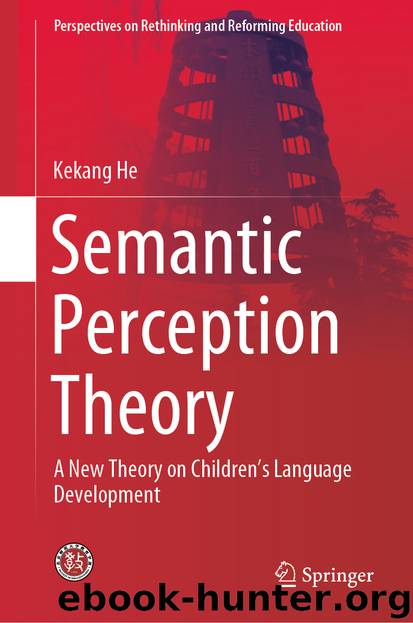Semantic Perception Theory by Kekang He

Author:Kekang He
Language: eng
Format: epub
ISBN: 9789811511042
Publisher: Springer Singapore
6.1 Historical Background of Theory of ‘Two Signal System’
Ivan Pavlov is a Russian physiologist and Nobel Prize winner in physiology. His life’s research involves three aspects: blood circulation, digestive gland activity, and advanced nervous activity. Among them, he found the theory of ‘conditioned reflex’ by studying the law of animal’s advanced nervous activity.
The concept of ‘reflex’ was the first put forward in the history of human beings. It is generally considered that Descartes, a French philosopher of the seventeenth century, viewed all the random activities of animals and humans (such as stimulating the cornea to cause blinking and immediately retracting from the burning heat of hands and feet) as a kind of reflex reaction (he did not use the word ‘reflex’ at that time)—an automatic response to external stimuli. Subsequent practice proved that the concept proposed by Descartes is precious—it plays a vital role not only in neurophysiology but also in the development of psychology. However, as a philosopher, Descartes did not study the neurophysiological mechanism of reflex, its formation, and change. The first pioneer to study reflex from the perspective of brain neurophysiology was the nineteenth-century British physiologist Sherrington,1 who studied the reflex arcs formed by more than two kinds of nerves and their functions. Unfortunately, Sherrington believed that reflex was achieved by the spinal cord, so his research was limited to the spinal cord and did not involve cerebral cortex. Later, Schechenov2 developed Sherington’s research work, which extended reflexes to all brain activities (not just the spinal cord). In his famous book Brain Reflection, he pointed out that ‘all activities of conscious and unconscious life, in terms of the way they occur, are reflections’; ‘everything… psychological activities, without exception, all developed through reflection’. Besides, Shechenov also associates reflex with inhibition of the nerve center.3 In this way, the concept of reflection has a richer and deeper meaning.
Based on endowing reflex with new connotation, Schechenov also analyzed the neural process model of a reflex activity and pointed out that it contains three main links4:(1)Initial link: the process of nerve excitation caused by external stimuli and transmitted to the brain through afferent nerves;
Download
This site does not store any files on its server. We only index and link to content provided by other sites. Please contact the content providers to delete copyright contents if any and email us, we'll remove relevant links or contents immediately.
The Art of Coaching Workbook by Elena Aguilar(50988)
Trainspotting by Irvine Welsh(21519)
Twilight of the Idols With the Antichrist and Ecce Homo by Friedrich Nietzsche(18503)
Fangirl by Rainbow Rowell(9095)
Periodization Training for Sports by Tudor Bompa(8170)
Change Your Questions, Change Your Life by Marilee Adams(7635)
This Is How You Lose Her by Junot Diaz(6794)
Asking the Right Questions: A Guide to Critical Thinking by M. Neil Browne & Stuart M. Keeley(5635)
Grit by Angela Duckworth(5523)
Red Sparrow by Jason Matthews(5390)
Paper Towns by Green John(5089)
Room 212 by Kate Stewart(5037)
Ken Follett - World without end by Ken Follett(4645)
Housekeeping by Marilynne Robinson(4347)
The Sports Rules Book by Human Kinetics(4294)
Double Down (Diary of a Wimpy Kid Book 11) by Jeff Kinney(4207)
Papillon (English) by Henri Charrière(4195)
The Motorcycle Diaries by Ernesto Che Guevara(4012)
Exercise Technique Manual for Resistance Training by National Strength & Conditioning Association(3955)
